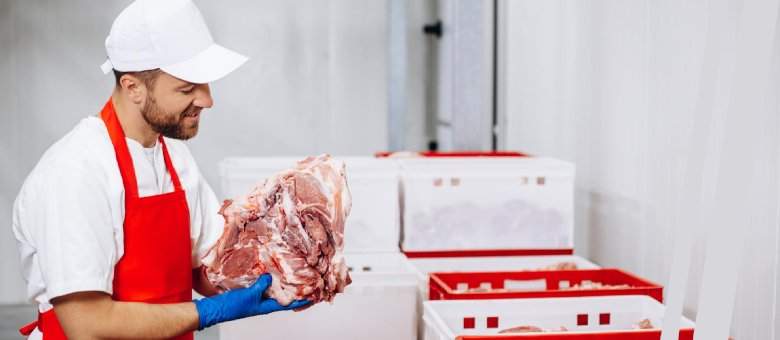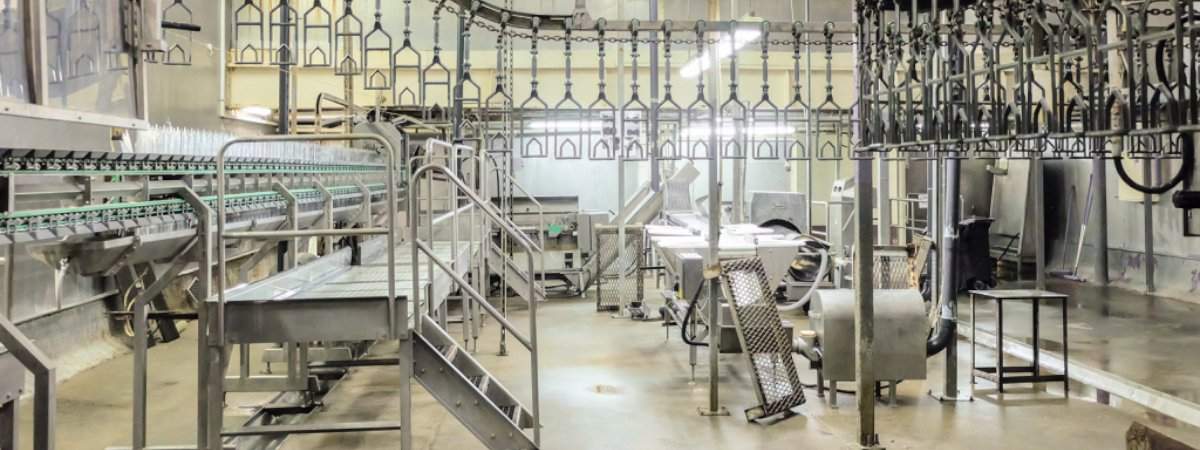HACCP
HACCP – Hazard Analysis Critical Control Points. It’s a management system in which food safety is addressed through the analysis and control of biological, chemical, and physical hazards from raw material production, procurement and handling, to manufacturing, distribution and consumption of the finished product.
HACCP, SOPs and the Food Industry
The HACCP concept was first developed in the 1960s by the U.S. National Aeronautics and Space Administration (NASA), working with Pillsbury, to ensure crumb and pathogen-free food that had extensive shelf-life properties for space travel. It was the first pathogen monitoring and measurement requirement imposed on the food industry.
Hazard Analysis Critical Control Points (HACCP) is now an internationally recognized method of identifying and managing food safety related risk and, when central to an active food safety program, it can provide your customers, the public, and regulatory agencies assurance that a food safety program is well managed, and the food you process is safe to consume for intended customers.
Today, many of the world’s best meat manufacturers and processors use the HACCP system as a basis for their food safety management programs and for compliance with government agencies and customer requirements
Prior to the implementation of a HACCP Based QA System or even just a HACCP program, the company must have the minimum requirements

The company must also have in place and effectively operating the prerequisite programs that control the following areas of the,
- a policy statement that expresses the management’s commitment to the program
- a management structure diagram that shows responsibility of all key personnel and staff training & verification procedures
- water quality
- pest & rodent control
- chemical & food additives procedures
- personal hygiene
- cleaning & sanitation program
- waste disposal
- calibration
The company must also have developed Good Manufacturing Practices (GMP’s)
This process can be quite complicated without the correct guidance, here at Kentmaster Equipment Australia we have the expertise to assess your current level of compliance and then guide you through this process, assist with writing S.O. Ps (Standard Operating Procedures and Work Instructions) before we tackle HACCP together.
Key – A self-developed QA and HACCP program is always more effective than a adapted program introduced to try and meet your needs.
Pre-requisite programs
The production of safe food requires that the HACCP system be built upon a sound foundation of pre-requisite programs.
These pre-requisite programs are designed to control the processing environment and food handlers as a source of contamination in the production of safe food. Sufficient prerequisite programs should be developed to make sure that hazards associated with the environment in which the process is conducted are controlled.
Since Prerequisite Programs play a major role in underpinning a HACCP system by providing control measures, it is essential that they are validated to demonstrate their effectiveness as control measures.

If you have any questions in relation to HACCP or if you would like your staff trained in HACCP
Process Control
Part A – Good Hygienic Practice
1. Water
Outcome
Water does not contaminate meat or meat products.
Performance Indicators
- Water supply and distribution is mapped for hot and cold water.
- The potable supply is protected from contamination up to the point of use.
- Potable water is tested regularly to confirm its potability.
- Water is treated where necessary to ensure potability.
2. Pest Control
Outcome
Pests do not jeopardise the wholesomeness of meat and meat products
Performance Indicators
- Pests that require control are identified.
- Access of pests to the establishments is controlled by the use of physical barriers.
- Population of pests outside of the buildings is reduced where possible.
- Monitoring programs identify when pests have breached access points.
3. Control of Hazardous Substances
Outcome
Hazardous substances do not jeopardise the wholesomeness of meat or meat products.
Performance Indicators
- Hazardous substances are identified.
- The establishment has documented information on all hazardous substances used.
- Hazardous substances are fit for purpose and used in accordance with the directions for use.
- Access to hazardous substances is controlled.
- Hazardous substances are stored and handled so as to not jeopardise the wholesomeness of meat and meat products.
4. Personal Hygiene
Outcome
Personnel are not a source of contamination to carcases, meat and meat products.
Performance Indicators
- Persons handling edible product or working in or entering edible product handling areas are wearing clean protective outer clothing.
- Personal hygiene practices ensure that meat and meat products are not contaminated.
5. Cleaning and sanitising
A. Pre-Operational Sanitation
Outcome
The plant and equipment are not a source of contamination to carcasses, meat or meat products.
Performance Indicators
- Procedures are in place to ensure that, prior to commencement of operations, plant and equipment that could contact product, either directly or indirectly, are cleaned and sanitised.
- Other areas of the establishment, including storage areas, amenities and establishment environs are kept in a suitable sanitary state.
B. Operational Sanitation
Outcome
The plant and equipment are not a source of contamination to carcasses, meat or meat products.
Performance Indicators
- During operations, production areas and equipment, including contact surfaces are kept in a suitable sanitary state.
- Procedures are in place to ensure that edible, inedible and condemned material are identified, handled and kept separate during production.
- Persons handling edible product or working in or entering edible product handling areas are medically fit for purpose.
6. Waste Disposal
Outcome
The handling of waste does not jeopardise the wholesomeness of meat and meat products.
Performance Indicators
- The waste disposal system is sufficient to handle and, where necessary, treat all waste produced at the premises originating from product handling areas.
- Contamination of edible product, product contact materials, product contact surfaces and product handling personnel by waste material is prevented.
7. Calibration
Outcome
Measuring equipment is maintained, calibrated and accurate.
Performance Indicators
- Measuring equipment is identified and manufacturer specifications listed.
- Measuring equipment is calibrated in accordance with manufacturer specifications.
- Records of calibration status and personnel responsible for testing calibration are maintained.
- Where equipment is outside appropriate calibration status, risk assessments are conducted on the product and the appropriate actions taken and recorded.

Additional procedures that necessary are:
A. Structure and Maintenance
Outcome
Premises and equipment are constructed and maintained to ensure that they do not jeopardise the wholesomeness of meat and meat products.
Performance Indicators
- A plan of the establishment shows equipment layout and product flow.
- Defects jeopardising the wholesomeness of meat and meat products are identified and corrected immediately.
- There is a structured preventive maintenance program and carried out in a timely manner.
- All repairs are carried out so that they do not jeopardise sanitary operation or the wholesomeness of meat or meat products.
B. Animal Welfare
Outcome
Procedures are in place to ensure the humane and considerate treatment of livestock, and the use of good husbandry and management practices to improve the welfare of livestock at processing establishments
Performance Indicators
- Adequate planning is carried out for management of stock on a daily basis and contingencies are in place for emergencies to minimise risks to animal welfare.
- Facilities and equipment are designed, maintained and operated to ensure minimal interference or stress is incurred by livestock.
- Weak, ill or injured livestock are identified and promptly treated in a humane manner.
- Livestock are managed to minimise stress and injuries.
- Procedures for humane slaughter, including restraint, stunning and slaughter of livestock, are carried out to minimise stress and in an efficient and effective manner.
C. Slaughter
Outcome
Slaughter processes ensure the wholesomeness and integrity of meat and meat products.
Performance Indicators
- All animals presented for slaughter undergo ante mortem inspection.
- All tasks involving the processing of animals and carcasses are detailed in written work instructions and personnel are competent in the application of these instructions.
- Dressing, other than procedures to prevent spillage from the oesophagus, does not take place before completion of primary bleeding.
- All carcases and carcase parts declared fit for human consumption have undergone post mortem inspection
- Contamination (direct) and cross contamination (indirect) is prevented or minimised where prevention is not possible.
- Product and processes are assessed for compliance.
D. Temperature Control
Outcome
Chilling and freezing practices maintain and do not jeopardise the wholesomeness of meat and meat products.
Performance Indicators
- Meat is chilled or frozen in a manner that achieves the Refrigeration Index (RI) criteria.
- Storage temperatures are nominated along with the maximum shelf life that can be expected under those storage conditions with due regard to wholesomeness.
- Monitoring procedures based on a significant number of samples or a ‘worst case scenario’ are developed for temperature controls.

If you have any questions in relation to HACCP or if you would like your staff trained in HACCP